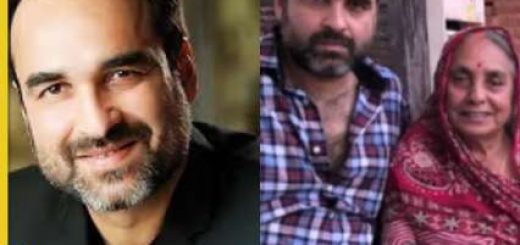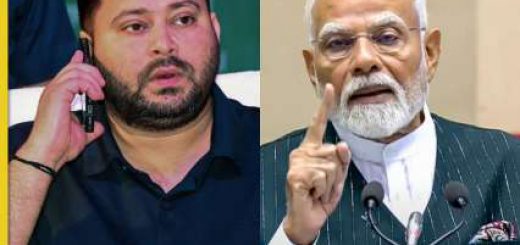The Legend of the Seeker
Rajit Kapur sat in Basu Chatterjee’s office at Natraj Studios, waiting for the famous director to show up for their meeting.
It was 1992. Rajit Kapur sat in Basu Chatterjee’s office at Natraj Studios, waiting for the famous director to show up for their meeting. After Basuda walked in, he interviewed Kapur for about 15 minutes — the conversation ranged from the actor’s experience in theatre to the tele-series the director was planning to shoot. “He also told me about a show based on Byomkesh Bakshi, a Bengali fictional detective, and I thought it was something like a local Sherlock Holmes,” recounts Kapur.
By the end of the meeting, Kapur expected to hear that he was being considered to play the lead character in the other new show. Instead, he was offered a chance to step into Byomkesh’s shoes in a series that would go on to become iconic on Indian television and set the standard for future interpretations of Sharadindu Bandyopadhyay’s popular detective.
“Byomkesh is a famous character in Bengali literature, but at the time, few outside Bengal were aware of him. The show, telecast on Doordarshan which had a wide reach, brought Byomkesh into popular consciousness,” says Kapur.
As far as fictional detectives go, Byomkesh Bakshi did not consider himself one. Instead, he preferred to be known as “satyanveshi” or a seeker of truth. The first story was published in 1932 and in a trope made popular by Arthur Conan Doyle’s Sherlock Holmes series, Bandyopadhyay, too, introduced Ajit, writer and faithful chronicler of Byomkesh’s adventures, as the detective began to solve thrilling cases in pre-Independence Calcutta, a city on the cusp of momentous change.
Dressed in a floral shirt and linen trousers, Kapur, 50, sits in his quaint office. His hair is greying and the actor’s appearance is not unlike the aging Byomkesh, whom he played till the end of the 33-episode series; the tenor of his voice is reminiscent of the confidence that Byomkesh exuded onscreen.
“The audience was hooked to the show from the third episode,” Kapur recalls. In the early 1990s, at a time when producers would receive feedback on a new show between five to seven weeks after going on air, this was rather unusual. But the universal appeal of the genre — a whodunit — and the simplicity of its execution, instantly won the show a dedicated following.
Fans will remember a tall and lean Kapur in a dhoti and kurta walking the streets of Calcutta, in search of clues or confiding in Ajit, played by KK Raina. Although Chatterjee had not conducted formal auditions or rehearsals, he organised a reading of a few episodes with Kapur and Raina to gauge their chemistry. With their shared love for theatre, the two soon grew close, forging a friendship that lasts till today.
While the novels were set in Calcutta, the show was chiefly shot in Bombay. “Although it was a series with each episode dedicated to one case, Byomkesh Bakshi was shot like a feature film. We would shoot based on locations. So the Kapoor bungalow in Versova, a popular location until it was razed to the ground, was where most of the shoots took place. Its rooms have served as Byomkesh’s residence, and as office spaces for various characters in a number of episodes,” says Kapur.
Chatterjee was on a tight budget and worked out every little detail in advance for all 33 episodes. They weren’t shot chronologically — Chatterjee shot the first 12 episodes over two months — the later episodes were shot sporadically, depending on the location. Since both Byomkesh and Ajit age during the course of the series, it meant a frequent change in make-up and costume for Kapur and Raina, sometimes halfway through the shoot. “At some point, whitener would be applied on my hair and the glasses would come on,” says Kapur. “We could never tell what each episode would look like until we finally saw it on air.”
Kapur and Raina had to tailor their performance based on the age they portrayed in each scene. “Byomkesh Bakshi became an exercise in acting,” says Kapur.
Chatterjee’s script was precise, and yet it left Raina and Kapur with some room to interpret and develop their respective characters. “We were given broad guidelines. For instance, I was told that Byomkesh is constantly thinking but he doesn’t speak unless he is absolutely sure of his analysis. But above all, he conducts himself with utmost dignity at all times. From here on, I let the character grow,” he says.
However, he is left with a tiny regret — the show didn’t allow the character to evolve. “It stuck with the whodunit format, and Byomkesh and Ajit remained the same throughout,” says Kapur.
The detective has got a new lease of life — Dibakar Banerjee’s slick interpretation, Detective Byomkesh Bakshy!, is due for release on April 3. And today, fans of the show are able to watch it on YouTube. Kapur is overwhelmed by how Byomkesh Bakshi continues to enthrall viewers. “I have received calls and messages from people who live outside India telling me that they’ve found the entire series online and are hooked to it again. When I took up the show, I hadn’t expected it to change the course of my career in the way it did. It remains the most popular character I’ve played, someone the audience remembers even if they don’t know my name,” he says.
Source:: Indian Express







